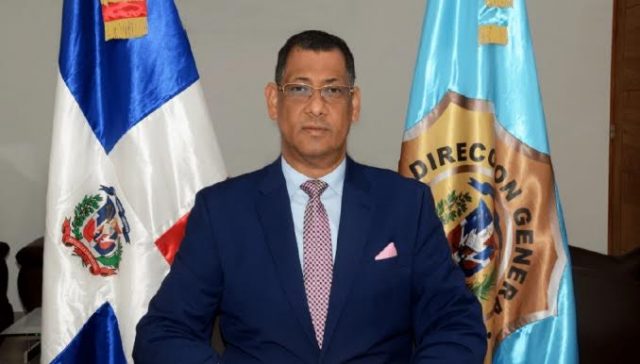
There is talk of a Haitian immigrant population of half a million to 1.5 million. Over the weekend, Enrique García, the general director of the Migration Agency shared sobering statistics: the Dominican government has only records for 31,000 legal Haitian residents.
The border is relatively easy to cross and the Haitian government does not document its citizen, creating major difficulties at this end to legalize the status of the immigrants.
García said the recent government effort to give out Border Inhabitant cards to Haitians that come and go was aborted. The DGM was criticized for the name of the card that seemed to legalize those who did not meet residency requirements. Garcia explains that the intent was to identify the population, especially those that frequently cross over for market days in Dajabon, Jimaní and Elías Piña and then return to Haiti on the same day. García said the identity cards would enable the Dominican government to tell how many people entered and how many had left.
“It was not a visa, it was not a residency card. The Migration Law calls for issuing the card. Thousands of Haitians enter for the binational market, so we wanted to apply controls by providing them with identification. If 2,500 people passed through, for example, and only 2,000 returned, we already have the data and we start looking for them to deport them. We made a survey over 6 months. We talked with the merchants of the area, with the authorities. It was a project that was being worked in an organized way, this does not create any right to that citizen,” he stressed.
The Migration Agency (DGM) says its records show around 31,000 Haitians reside legally in the Dominican Republic. He said it is very difficult to know how many are here illegally. “That is why we want to apply the use of the ID card because we would have a control,” he commented. The Haitians work in commerce, farms and in construction. He admitted there are thousands of Haitians working here without documentation.
He is optimistic the border fence under construction at several points between the two countries will reduce people, drug and arms trafficking, and theft of vehicles and livestock. He said more trained personnel will be deployed to the border, equipped with technological tools.
García did not address the observations published in Hoy newspaper that the fence excludes many areas that would have been affected by the channel under construction by Haitians that is said to affect the flow of water for Dominican farmers.
“As the Haitian crisis worsens, more Haitians want to cross to the Dominican Republic. The kidnappings and destruction of businesses in that country motivate many people to migrate, either with their documentation or illegally. Hence, the authorities have much greater responsibility, a work that is done with the military authorities, who are the ones who have to guard our border,” he said.
He addressed the high cost of deporting illegal migration, especially when people need to be deported by air. “People do not imagine all that is involved in deporting a foreigner whose visa has expired or who simply entered illegally. This has a big cost. Sometimes we have to buy tickets for Chinese, and that is very expensive, for example. It is not just a matter of apprehending them. These people have to be housed in a place, fed, given medical attention, and this requires personnel,” he remarked.
Read more in Spanish:
El Caribe
Hoy
28 March 2022

